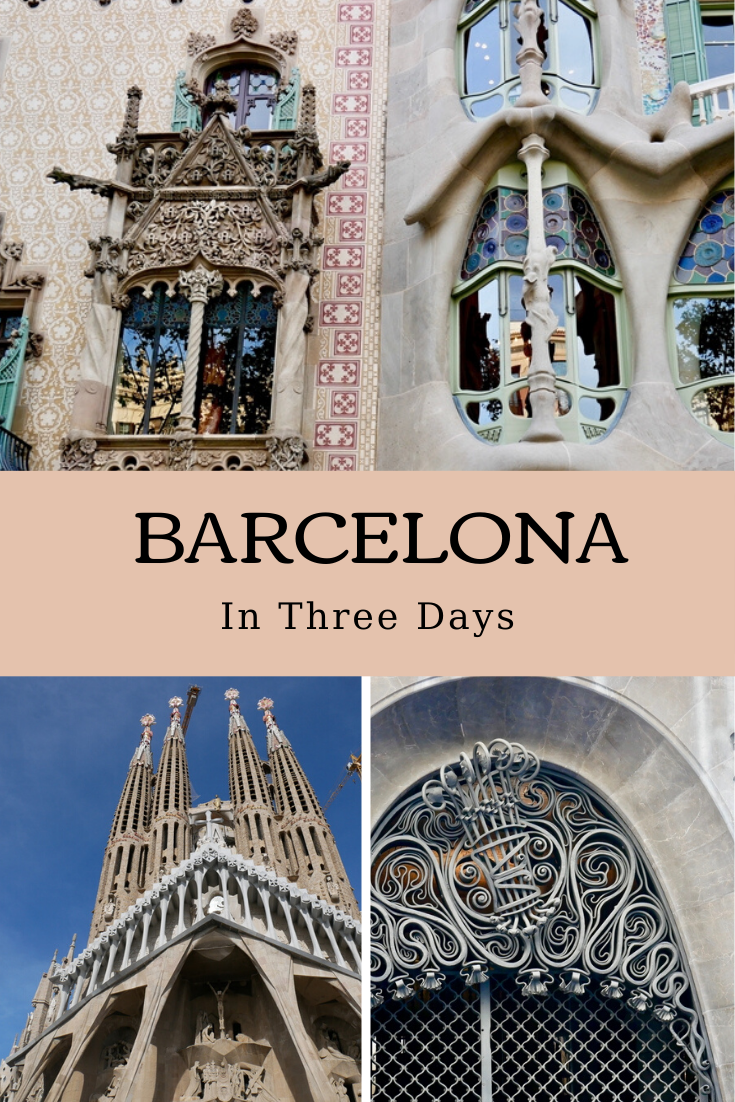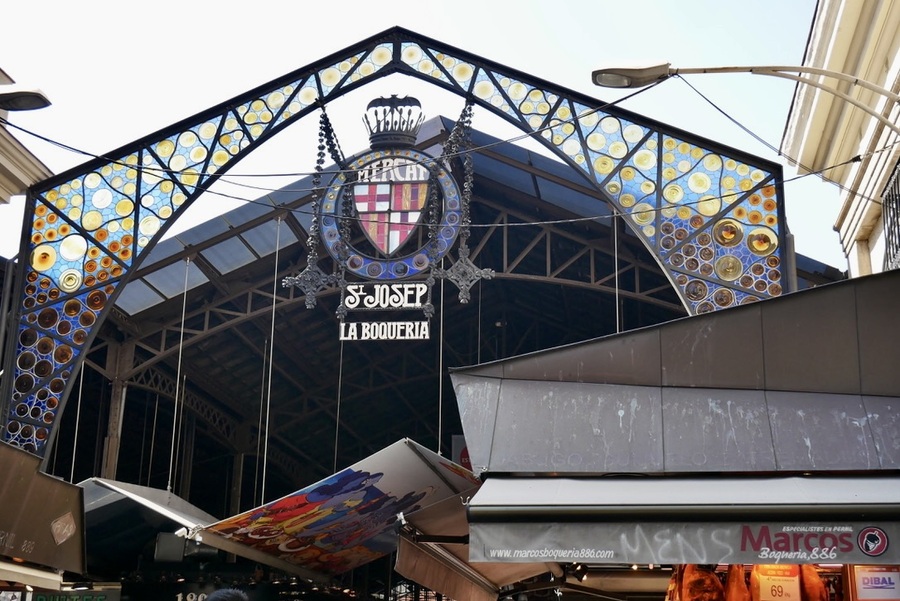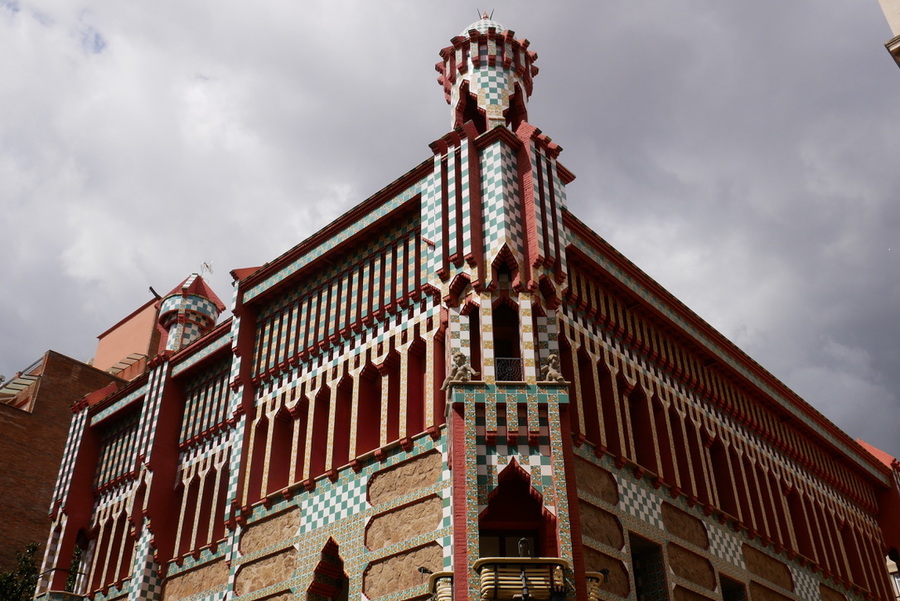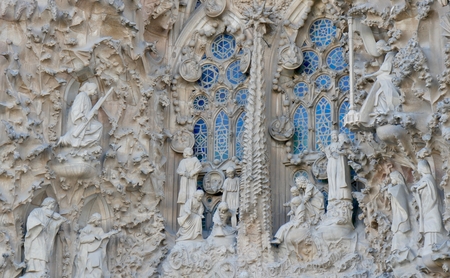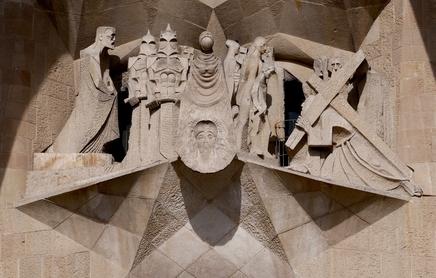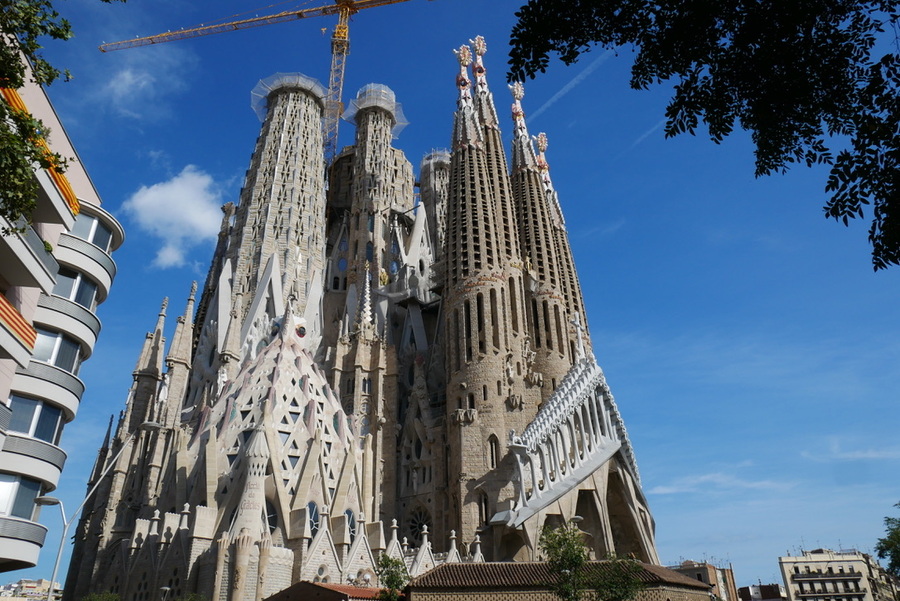
Three Days in Barcelona: What to See and Do
With whimsical fabled architecture and some of the liveliest streets in Europe, Barcelona lures party-seekers, history enthusiasts, and everyone in between.
The city houses a staggering wealth of architectural masterpieces and cultural highlights—weaving a tapestry of iconic buildings, resplendent plazas and winding alleyways.
As the largest city in Catalonia, it represents the best of Spain’s breakaway region in a nutshell. It is boisterous yet classy, worldly yet idiosyncratic.
THREE DAY BARCELONA ITINERARY
Following a brief side-trip to Andorra, I met my mother-in-law in Barcelona for a three day visit to Antoni Gaudí’s homeland.
During my three days in Barcelona, I took the opportunity to retrace the footsteps of my previous visit to Spain in 2010, while adding a few new destinations to the mix.
With numbered days and a limited budget, I photographed Barcelona’s modernist buildings, relived the city’s vibrant atmosphere, and took a day trip to the iconic Montserrat Mountain.
DAY 1: THE GOTHIC QUARTER AND EIXAMPLE
On our first day in Barcelona, we toured the Gothic Quarter and the Eixample, orienting ourselves with the layout of the city’s core.
The Gothic Quarter, or Barrio Gotico, is the heart of Barcelona’s old city. It is a historic district that consists of narrow labyrinthine streets and alleyways. Tapas bars, boutique shops and art galleries line the streets of the historic neighborhood. The Gothic Quarter is the oldest part of the city and home to the Barcelona Cathedral and Plaça Reial.
Many of Barcelona’s most intriguing places to visit lie just a stone’s throw away from the neighborhood—including the Picasso Museum, the Mercat de la Boqueria, the Palau de la Musica and Antoni Gaudí’s oft-overlooked Palau Güell.
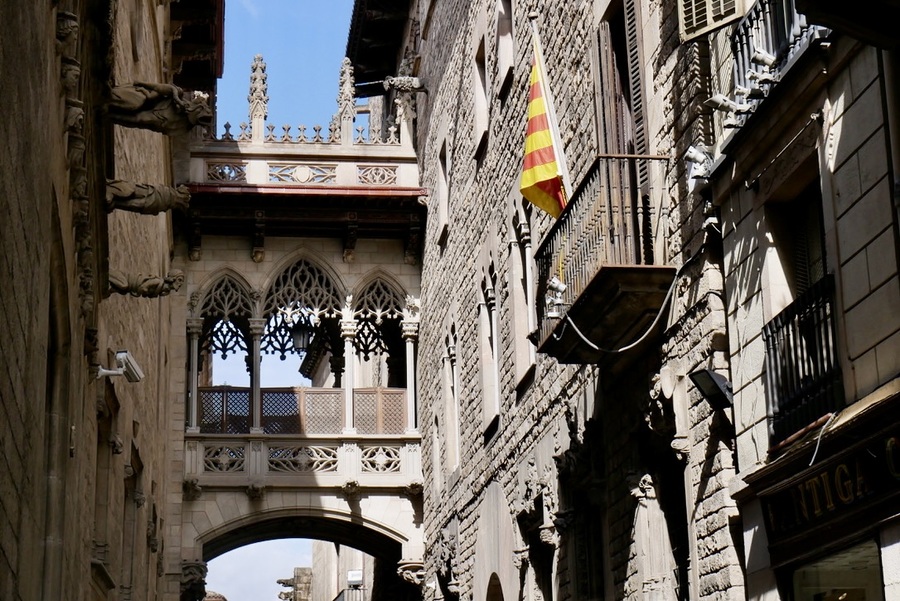
The Eixample lies just north of the Gothic Quarter. It houses many of the city’s most heralded architectural marvels. The neighborhood dates back to the 1800s, when Barcelona’s uncurbed growth led to the city’s need for expansion. As a result, the early 20th century saw the construction of many new buildings and neighborhoods during a time when the Catalan modernist movement was in full swing.
Some of Antoni Gaudí’s most prominent masterpieces lie sprinkled amongst the stately apartment buildings of the Eixample.
PLAÇA REIAL
Home to restaurants, nightclubs, and Barcelona’s famous jovial atmosphere, the Plaça Reial is a popular place to visit within the city’s Gothic Quarter.
Sprinkled with shade-giving palm trees and surrounded by a string of arched doorways that frame a covered walkway, it provides a spot to relax during the intense afternoon heat. Plaça Reial’s twin square—the Plaza Garibaldi—lies nearly 6,000 miles away, in Mexico City.
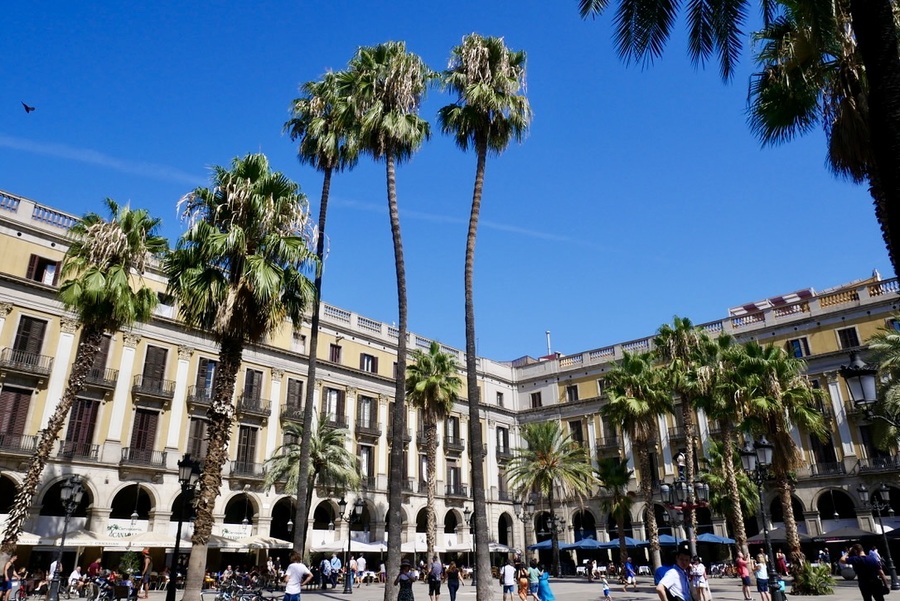
The Plaça Reial comes alive at night. It is worth making a detour to the historic square after sunset, while strolling the Rambla.
BARCELONA CATHEDRAL
The Barcelona Cathedral may play second fiddle to Barcelona’s yet-to-be-finished Sagrada Familia, but it is nonetheless one of the top places to visit in the city.
The imposing 14th century cathedral, dedicated to Santa Eulalia, lies sandwiched amongst the narrow alleyways of the Gothic Quarter. It is one of the grandest places of worship in Catalonia.
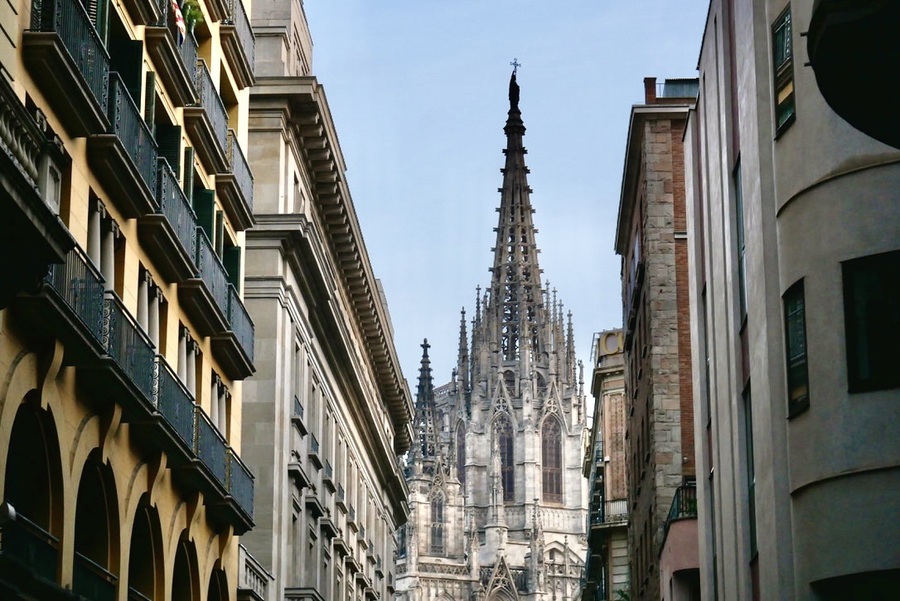
The Barcelona Cathedral is the official seat of the Archbishop of Barcelona and is known for its Gothic-style architecture.
You can visit the roof of the cathedral for views of its Gothic Spires. Entrance to the cathedral costs €9.
PICASSO MUSEUM
The Picasso Museum, located in the Gothic Quarter, contains one of the most extensive collections of artist Pablo Picasso’s works. The museum’s highlights include an extensive collection of Picasso’s early sketches and paintings, as well as some of his later pieces.
Entrance to the museum costs €15.
PALAU GÜELL
The Palau Güell, designed by Antoni Gaudi for the industrial tycoon Eusebi Güell, dates back to 1886. It is situated a block from the Rambla, near the Gothic Quarter (technically in El Raval).
The Güell Palace is not as well known as Gaudí’s other creations, but it is worth visiting when you’re in the Gothic Quarter.
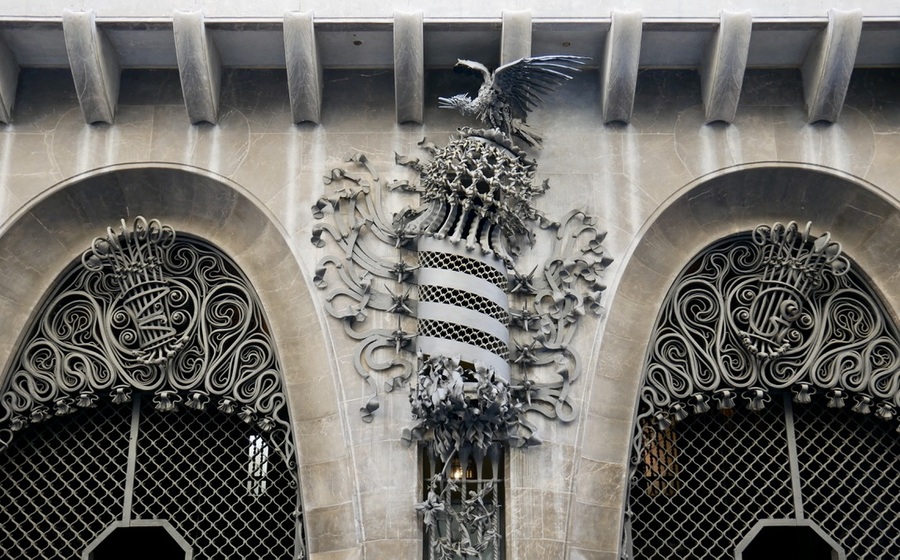
I did not pay to enter the UNESCO-recognized Palau Güell (€ 12), but very much enjoyed admiring its exterior during my visit to the area.
PALAU DE LA MUSICA
The Palau de la Musica is a jewel of Catalan modernist architecture. Listed as a World Heritage Site by UNESCO alongside the quirky Hospital de Sant Pau, it is among the top things to see in central Barcelona.
Built in the early 20th century for the Orfeo Català musical society, the brick structure represents a high point in Barcelona’s modernism movement. Its ornate artisanship boasts stained glass, florals, mosaics, and intricate sculptures.
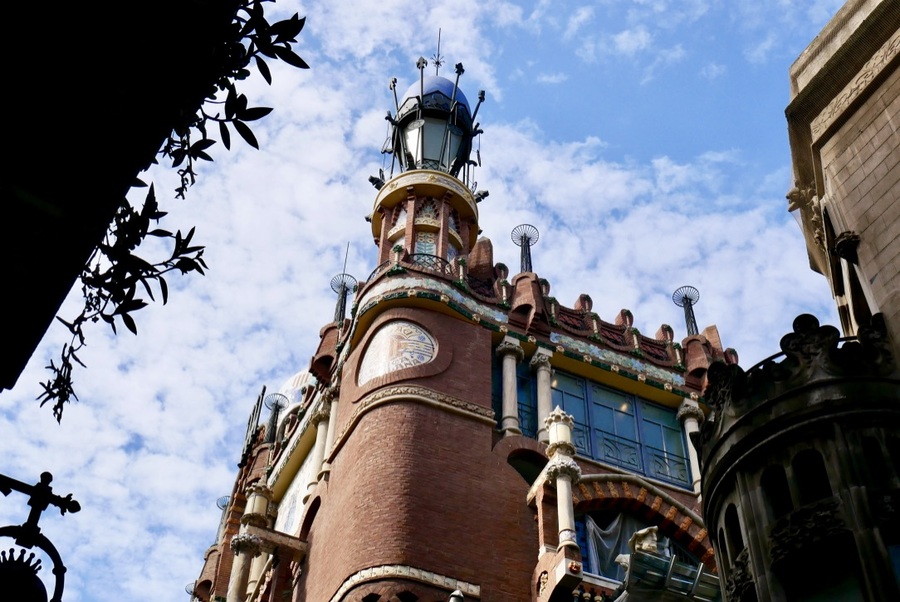
While you can attend concerts at the historic music venue, you can also enter its ornate concert hall via a €20 guided tour.
MERCAT DE LA BOQUERIA
The covered Mercat de la Boqueria lies just off La Rambla, near Barcelona’s Gothic Quarter. With its banquet of fresh local produce, its jovial atmosphere and its distinctive modernist design, the 800 year old market is among Barcelona’s top landmarks.
Even if you aren’t looking for anything in particular to buy, the historic market is a worthwhile place to visit during your Barcelona itinerary.
CASA MILÀ (LA PEDRERA)
The UNESCO-listed Casa Milà (known colloquially as La Pedrera) is one of Antoni Gaudí’s top achievements. It was built in the early 1900s, as a combined apartment and office block.
The house, located along the Passeig de Gracia in Barcelona’s Eixample, was Antoni Gaudí last civil work project.
With its wavy lines and unique use of light, Casa Milà is both stylish and functional.
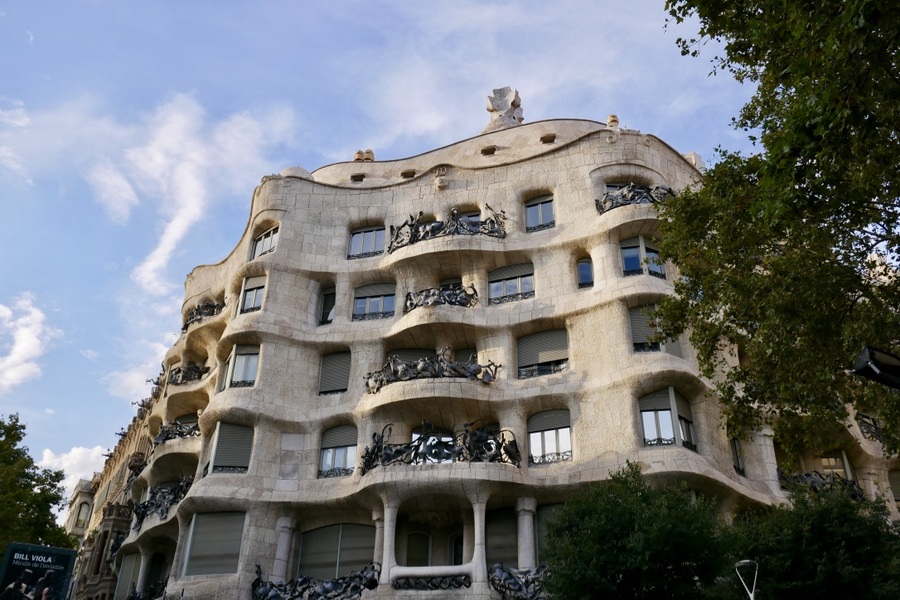
Entrance to Casa Milà costs €25. You’ll want to book tickets in advance to avoid wasting too much time in line.
The house opens to visitors at 9am and closes at 8:30pm.
CASA BATTLÓ
In a city defined by its whimsical buildings, UNESCO-listed Casa Batlló stands out as an architectural treasure. Alongside Casa Milà, it is undoubtedly one of Antoni Gaudí’s crowning achievements.
Constructed in 1904 for the wealthy Batlló family, the once-private home combines a colorful tile-covered facade, eye-mask-evoking balconies, and a light-filled interior.
Its adjacent building—the Casa Amattler—is also worth admiring from the outside.
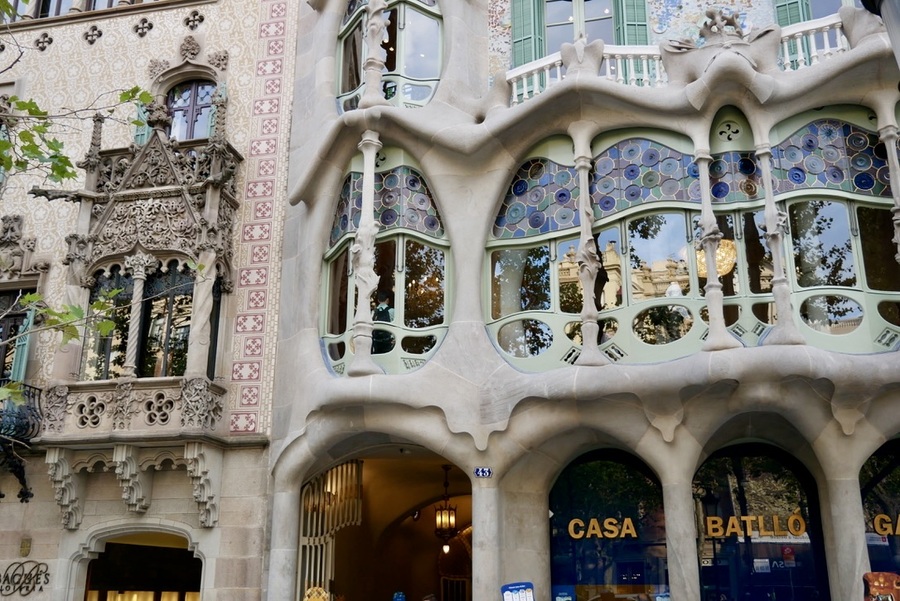
Casa Batlló is open daily from around 9am to 8pm. Tickets cost €29 per adult.
EVENING STROLL ON THE RAMBLA
After our self-guided walking tour of the Gothic Quarter and Eixample, we headed to the Rambla in order to walk along one of Europe’s most beloved pedestrian promenades.
Flanked by palm trees, La Rambla is a broad boulevard that swarms with people until the wee hours of the night. It is Barcelona’s most famous street and one of the most lauded landmarks in the city. The Rambla is a gathering place for young and old, tourists and locals, street performers, acrobats, strolling lovers and occasional pickpockets.
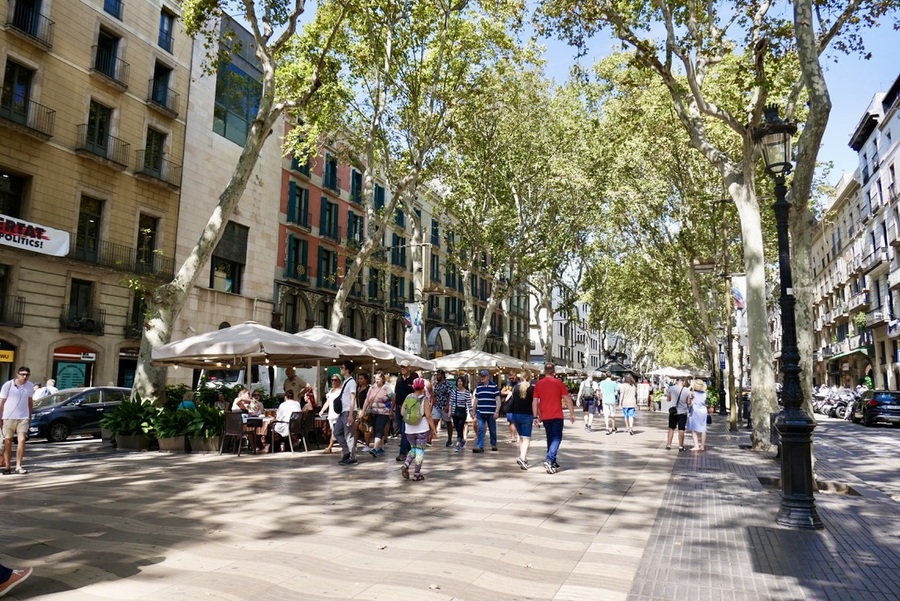
While touristy, visiting the Rambla is one of the best free things to do in Barcelona. It is simply a fantastic place to take a stroll and watch the world go by.
DAY 2: CONTINUING IN GAUDÍ’S FOOTSTEPS
While our first day in Barcelona gave us a taste of Gaudí’s unique style, our second allowed us to continue in the architect’s footsteps.
We started at the Casa Viçens and then finished our day at two of Barcelona’s most iconic landmarks.
CASA VIÇENS
The second phase of our self-guided Gaudí tour began with a visit to the little-known Casa Viçens.
Casa Viçens was Gaudí’s first masterpiece. It represents a new chapter in the history of Catalan architecture, as well as the beginning of a successful career for the visionary architect.
In designing the house, Gaudí mixed together a variety of incongruous patterns and materials. With his wacky design, he broke away from tradition and created a style that was uniquely his own.
As with Casa Mila and Casa Batlló, I chose not to buy entrance tickets to the house due to long lines and lack of time.
I do, however, hope to return to Barcelona in the future and set foot in the architect’s bizarre and quirky creations.
PARC GÜELL
Aside from the Sagrada Familia, Parc Güell is Barcelona’s most popular tourist destination. Located near Casa Viçens, the whimsical Gaudí landscape blends modernist architecture with the natural environment. The fairytale wonderland of candy palaces and gingerbread houses looks like a scene straight out of Sintra.
Strolling through its gardens is among the top things to do in Barcelona.
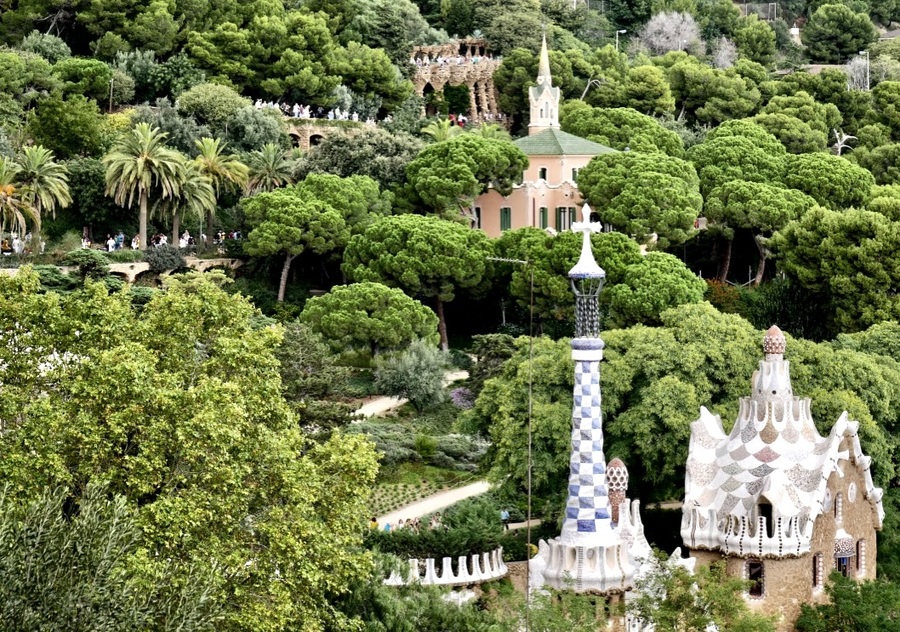
During our visit to Barcelona, we hoped to spend a few hours at the popular park destination. When we arrived at the park, however, I learned that a lot has changed in the past decade. While most of the park is still free and open to the public, Parc Güell’s most famous monuments have been cordoned off and require an entrance fee.
Don’t make the same mistake I made by waiting till the last minute to purchase your tickets. You can book your skip-the-line tickets online, in advance.
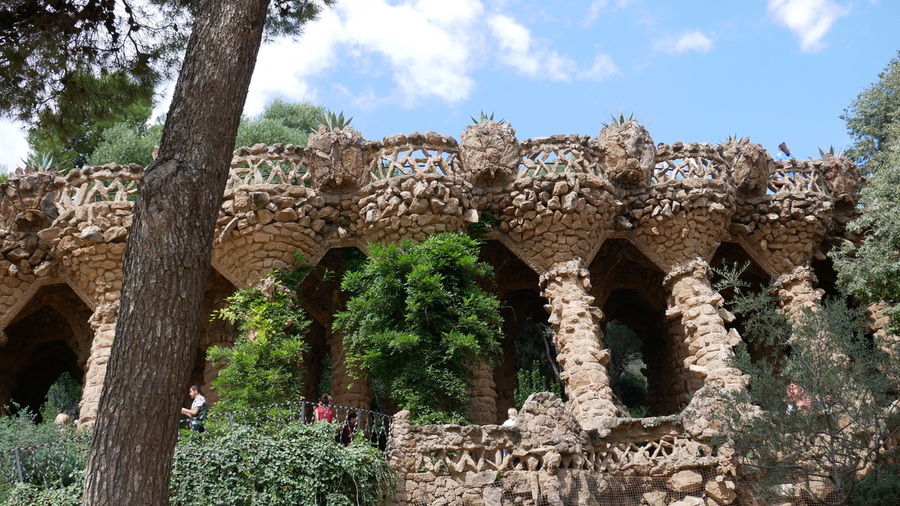
Unfortunately, tickets to Parc Güell’s paid monuments were sold out during our visit.
And so we chose to spend the morning admiring the park’s free attractions, passageways and viewpoints.
THE SAGRADA FAMILIA
The Sagrada Familia is Barcelona’s most famous landmark, Gaudí’s most remarkable vision, and the highlight of nearly every Barcelona itinerary. The unfinished Roman Catholic basilica has been under construction for over a century and is projected to be completed in 2026—on the centenary of the architect’s death.
The cathedral represents Gaudí at his whimsical, nature-inspired peak.
We attempted to visit the Sagrada Familia for an early afternoon tour, following a leisurely walk through Parc Güell. I was eager to revisit the Sagrada Familia and view its interior. I wanted to see the progress that had been made since my previous visit in 2010.
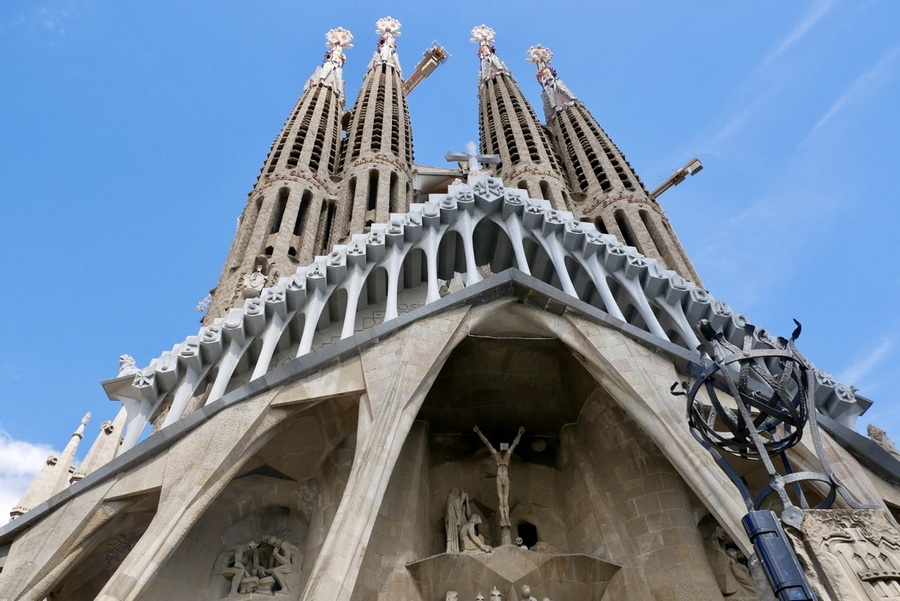
But on the day of our tour, the Sagrada Familia was closed all day for a private event. Even though we had bought advance tickets online and delayed the next part of our vacation in order to step foot in the cathedral, we remained barred from entering.
Disheartened, we accepted a refund and admired the exterior of the church as best we could from outside the entrance gates.
The Sagrada Familia’s exterior consists of three primary facades—the Nativity Facade, the Passion Facade, and the Glory Facade.
The Nativity Facade depicts the birth of Jesus. Its intricate stonework consists of exuberant ornamentation, including animals, flowers and fruits.
Opposite the Nativity Facade, stands the Passion Facade. The two are in stark contrast to one another. While the former is ornate and bursting with images of life, the latter is bare, minimalistic and representative of Jesus’ death.
The church’s yet-to-be constructed Glory Facade was little more than a blank canvas when we visited.
FREE EVENING
On the evening of our second day in Barcelona, we returned to the Rambla for a relaxed evening of sangria-sipping and people-watching.
Though we’d strolled along Barcelona’s famous promenade during the first day of our Barcelona itinerary, we were anxious to spend more time reveling in the city’s jovial atmosphere.
If you feel satisfied with the time you spent on Barcelona’s main drag, this would be the perfect time to choose your own adventure. You can head up to Montjuic Hill, relax on Barceloneta Beach, or return to your favorite Barcelona attraction for a more in-depth visit.
-
MONTJUIC
Monjuic is a scenic wooded hill in in southwest Barcelona. It lies between Plaça Espanya and the commercial port. In Catalan, the name ‘Montjuic’ means ‘Jewish Mountain.’ The area was once the home to the city’s Jewish community.
Montjuic boasts several noteworthy Barcelona attractions. Specific places of interest include the Montjuic Castle, the National Museum of Catalan Art, the Olympic Ring, and the Magic Fountain.
-
BARCELONETA BEACH
If you’re a lover of sand and sun, you don’t have to travel far from Barcelona’s city center to get your fix. From the waterside end of La Rambla, it’s a 15-minute walk to Barceloneta. The popular Barcelona Beach is absolutely packed with people and has a lovely promenade.
Considering all the noteworthy attractions in and around Barcelona, I didn’t include it in my three day itinerary (though I’d visited on a prior trip to the city).
However, if you’re looking for a few hours of beach-bumming during your trip to Barcelona, the popular beach is a convenient option.
DAY 3: MONTSERRAT MONASTERY DAY TRIP
With only three days in Barcelona, you’ll face a tough choice: stick around the city for more sightseeing, or take a day trip to somewhere nearby.
On our final day in Barcelona, we chose the latter option and headed to the Montserrat Monastery that lies nestled in a gnarled mountain. The half-day trip was a highlight of our Barcelona itinerary—giving us the opportunity to explore hiking trails, admire art, and soak in the beauty of one of Catalonia’s most impressive landmarks.
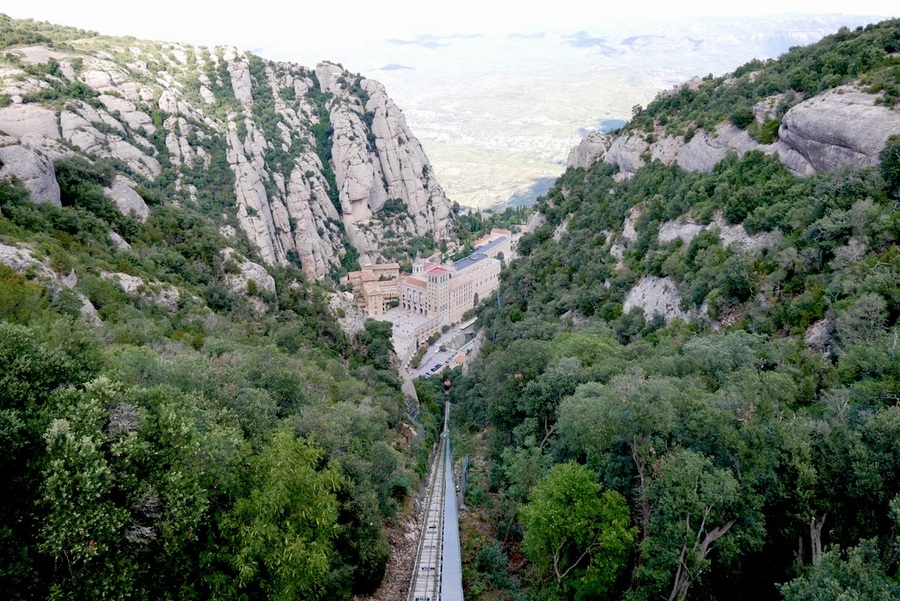
The recognizable mountain has been sculpted over millennia by the elements, giving it a unique oblong shape with rocky knobs and towering outcrops. Its serrated turrets extend some 1200 meters high, like gnarled fingers.
Teeming with natural beauty and home to a museum and monastery, Montserrat is a wonderland for hikers and art enthusiasts.
MONTSERRAT MONASTERY AND CATHEDRAL
The Benedictine Abbey of Montserrat lies nestled amidst the rock formations of Montserrat Mountain. A cathedral that houses the revered Black Madonna of Montserrat lies adjacent to its courtyard.
The statue, often referred to as the Virgin of Montserrat or ‘La Moreneta‘, represents one of the world’s most famous depictions of the Black Madonna.
The 12th century statue stands above the cathedral’s high altar, overlooking the interior of the Montserrat Basilica.
MONTSERRAT MUSEUM
The Montserrat Museum lies adjacent to the monastery and cathedral. It is one of the finest museums in Catalonia, boasting displays that range from Egyptian mummies, to Orthodox icons, to fine canvases painted by Caravaggio, El Greco and Picasso.
HIKING TRAILS IN MONTSERRAT
Numerous manicured paths—many of them leading to small churches and sanctuaries—criss-cross Montserrat’s Joshua-Tree-like jumble of boulders and rock spires.
You can take the Sant Joan funicular to the mountaintop for birds-eye views of Montserrat from above.
I regret not doing much hiking in Montserrat. I completely underestimated the beauty of the area and did not budget the extra time into our day trip.
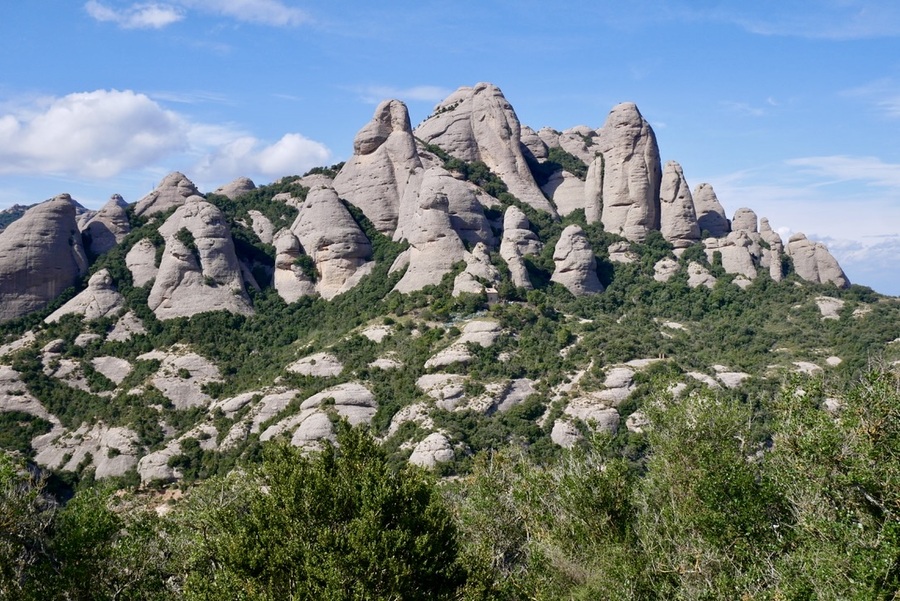
Popular hikes in Montserrat include the Sant Jeroni loop trail (9km) and Hermites Way path (6.7km).
The area is truly spectacular. Even if you only have three days in Barcelona, the mountain and its surroundings merit a visit.
WHERE TO STAY IN BARCELONA
There are accommodation options in Barcelona for every budget and travel style. You’ll find everything from cheap party hostels to swanky and opulent hotels.
Top-rated options for solo travelers visiting Barcelona on a budget include the Ten to Go Hostel and the Yeah Barcelona Hostel.
The Hotel Jazz is a centrally-located midrange option with a stylish rooftop pool and fantastic reviews.
And among the city’s high end hotels, the ME Barcelona, the Cotton House Hotel and the Mandarin Oriental are popular choices.
BEST TIME TO VISIT BARCELONA
Touristy Barcelona is no stranger to crowds. So no matter what time of year you visit, you’ll be greeted with droves of other travelers who are keen on experiencing Catalonia’s dynamic and lively city.
Weather-wise, May and June are the best months to visit Barcelona. In early summer, sunny days and little rainfall mean you’ll likely have prime conditions for sightseeing.
As the summer progresses, pleasant temperatures give way to sweltering heat. July and August bring high temperatures and large crowds.
Winters in Barcelona are warm relative to the rest of Europe, so the city can provide a nice break from the frigid temperatures of nearby countries.
*****
During our three days in Barcelona, I fell in love with the city all over again. Catalonia’s largest city is replete with things to see—including iconic buildings, sun-kissed beaches, verdant city parks and narrow labyrinthine streets.
Sprinkle in some world-class museums and nightlife that pulses until the wee hours of the morning, and you’ve got a city with a personality that soars higher than the spires of the Sagrada Familia
___________________________________
DID YOU ENJOY THIS 3 DAY BARCELONA ITINERARY? PIN IT!
